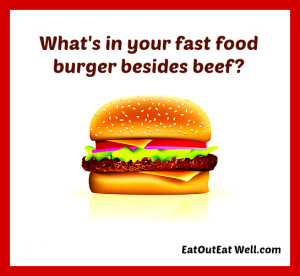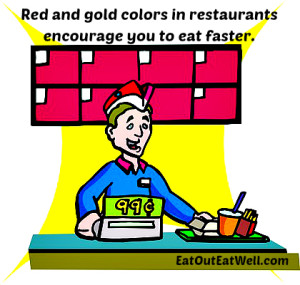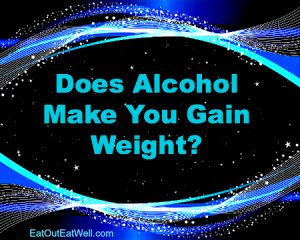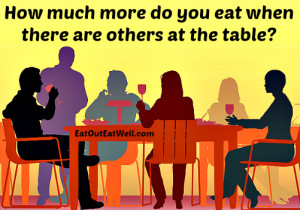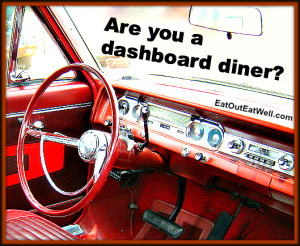Have you had a Big Mac in different parts of the country or even in different parts of the world? It tastes pretty much the same – which, in some ways, is rather comforting when you might be far from home.
Fast food is cheap, quick, reproducible in any outlet, often tasty, and consistent. To be all of those things makes it pretty difficult to use locally sourced and fresh ingredients.
Fast food restaurants might be trying to make their menus healthier by adding veggies and fruit, but the bottom line is that much of their food is processed and preserved – and that doesn’t happen without chemicals.
An occasional trip to Mickey D’s isn’t a disaster and the burger content is beef (although who knows the source of the cows, what parts of the cow are used, and what they’ve been fed). But what about the bun, the sauce, and the cheese that accompany the burger? How does the bun stay soft and how does the “special sauce” always taste the same?
Take a look at the ingredients in a Big Mac, a burger, and cheeseburger from McDonald’s (all info is from McDonald’s own site). Although McDonald’s is used as an example, almost all of the fast food chains use additives and preservatives in their food. One of the biggest shockers is the bun – ask a home baker or a bakery how many ingredients they put in their buns – then look at these. Then check out the sauce.
Then decide how frequently you want to indulge.
Big Mac:
Components: 100% BEEF PATTY, BIG MAC BUN, PASTEURIZED PROCESS AMERICAN CHEESE, BIG MAC SAUCE, SHREDDED LETTUCE, PICKLE SLICES, ONIONS
Ingredients: 100% Pure USDA Inspected Beef; No Fillers, No Extenders. Prepared with Grill Seasoning (Salt, Black Pepper).
Ingredients: Enriched Flour (Bleached Wheat Flour, Malted Barley Flour, Niacin, Reduced Iron, Thiamin Mononitrate, Riboflavin, Folic Acid), Water, High Fructose Corn Syrup and/or Sugar, Yeast, Soybean Oil and/or Canola Oil, Contains 2% or Less: Salt, Wheat Gluten, Calcium Sulfate, Calcium Carbonate, Ammonium Sulfate, Ammonium Chloride, Dough Conditioners (May Contain One or More of: Sodium Stearoyl Lactylate, DATEM, Ascorbic Acid, Azodicarbonamide, Mono and Diglycerides, Ethoxylated Monoglycerides, Monocalcium Phosphate, Enzymes, Guar Gum, Calcium Peroxide), Sorbic Acid, Calcium Propionate and/or Sodium Propionate (Preservatives), Soy Lecithin, Sesame Seed.
Ingredients: Soybean Oil, Pickle Relish (Diced Pickles, High Fructose Corn Syrup, Sugar, Vinegar, Corn Syrup, Salt, Calcium Chloride, Xanthan Gum, Potassium Sorbate [Preservative], Spice Extractives, Polysorbate 80), Distilled Vinegar, Water, Egg Yolks, High Fructose Corn Syrup, Onion Powder, Mustard Seed, Salt, Spices, Propylene Glycol Alginate, Sodium Benzoate (Preservative), Mustard Bran, Sugar, Garlic Powder, Vegetable Protein (Hydrolyzed Corn, Soy and Wheat), Caramel Color, Extractives of Paprika, Soy Lecithin, Turmeric (Color), Calcium Disodium EDTA (Protect Flavor).
Crinkle Cut Pickles: Ingredients: Cucumbers, Water, Distilled Vinegar, Salt, Calcium Chloride, Sodium Benzoate (Preservative), Natural Flavors (Plant Source), Polysorbate 80, Extractives of Turmeric (Color).
Pasteurized Process American Cheese: Ingredients: Milk, Cream, Water, Cheese Culture, Sodium Citrate, Contains 2% or Less of: Salt, Citric Acid, Sodium Phosphate, Sorbic Acid (Preservative), Lactic Acid, Acetic Acid, Enzymes, Sodium Pyrophosphate, Natural Flavor (Dairy Source), Color Added, Soy Lecithin (Added for Slice Separation).
Hamburger:
Components: 100% BEEF PATTY, REGULAR BUN, KETCHUP, MUSTARD, PICKLE SLICES, ONIONS
Cheeseburger:
Components: 100% BEEF PATTY, REGULAR BUN, PASTEURIZED PROCESS AMERICAN CHEESE, KETCHUP, MUSTARD, PICKLE SLICES, ONIONS
100% Beef Patty: Ingredients: 100% Pure USDA Inspected Beef; No Fillers, No Extenders. Prepared with Grill Seasoning (Salt, Black Pepper).
Regular Bun: Ingredients: Enriched Flour (Bleached Wheat Flour, Malted Barley Flour, Niacin, Reduced Iron, Thiamin Mononitrate, Riboflavin, Folic Acid), Water, High Fructose Corn Syrup and/or Sugar, Yeast, Soybean Oil and/or Canola Oil, Contains 2% or Less: Salt, Wheat Gluten, Calcium Sulfate, Calcium Carbonate, Ammonium Sulfate, Ammonium Chloride, Dough Conditioners (May Contain One or More of: Sodium Stearoyl Lactylate, DATEM, Ascorbic Acid, Azodicarbonamide, Mono and Diglycerides, Ethoxylated Monoglycerides, Monocalcium Phosphate, Enzymes, Guar Gum, Calcium Peroxide), Sorbic Acid, Calcium Propionate and/or Sodium Propionate (Preservatives), Soy Lecithin.
Pasteurized Process American Cheese:
Ingredients: Milk, Cream, Water, Cheese Culture, Sodium Citrate, Contains 2% or Less of: Salt, Citric Acid, Sodium Phosphate, Sorbic Acid (Preservative), Lactic Acid, Acetic Acid, Enzymes, Sodium Pyrophosphate, Natural Flavor (Dairy Source), Color Added, Soy Lecithin (Added for Slice Separation).
Nutrition:
Big Mac, 7.6 oz: 550 calories, 29g fat, 10g saturated fat, 1g trans fat, 970mg sodium, 46g carbs, 25g protein
Hamburger, 3.5 oz: 250 calories, 9g fat, 3.5g saturated fat, 0.5 trans fat, 480mg sodium, 31g carbs, 12g proteinS
Cheeseburger, 4 oz.: 300 calories, 12g fat, 6g saturated fat, 0.5g trans fat, 680mg sodium, 33g carbs, 15g protein
